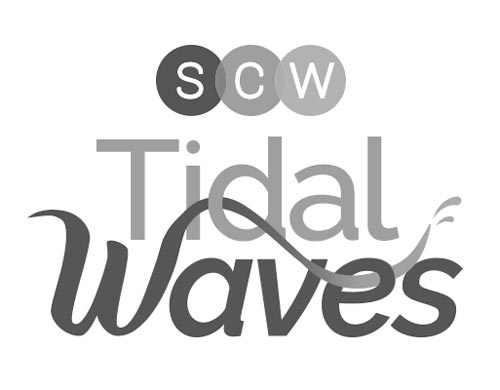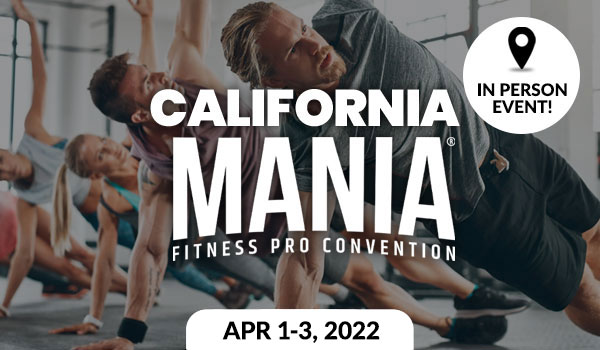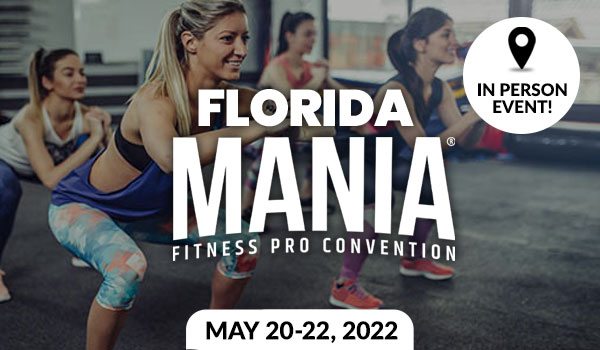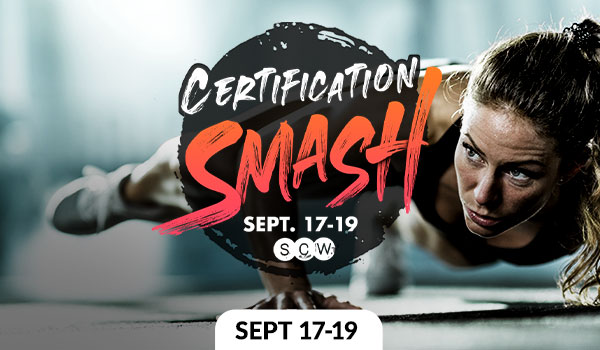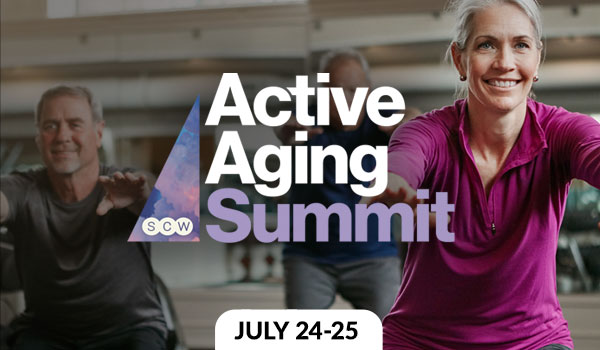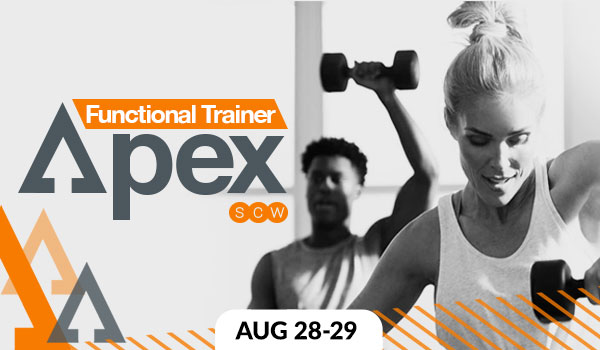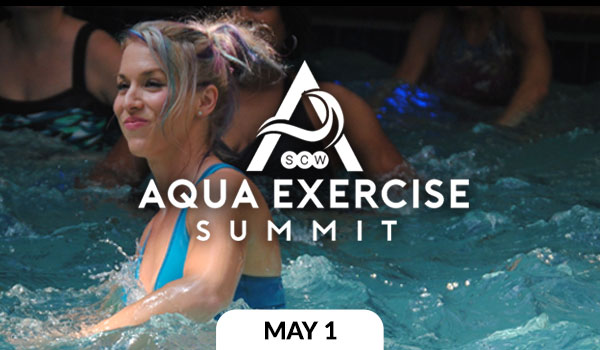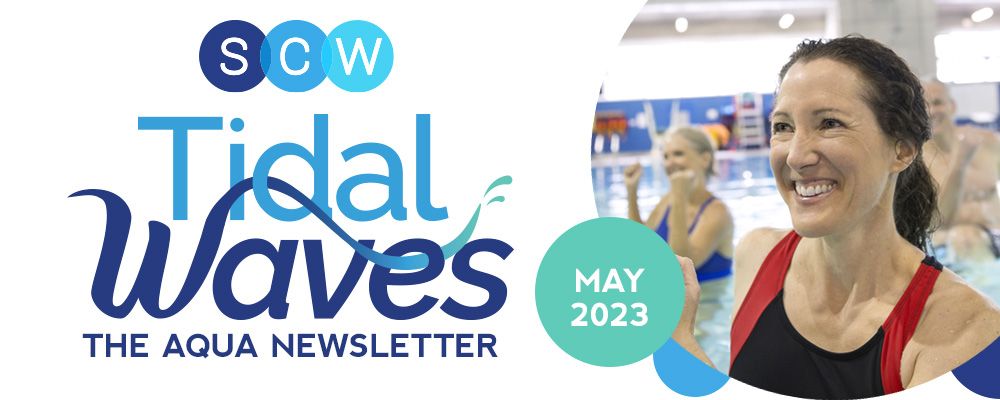
Aquatic Power
By Tyler Cook
Elite athletes need to train for power. They need to be able to reach maximum speeds as fast as possible or be able to jump as high as they can with little setup. They sprint all out and make quick cuts and can stop on a dime. Weightlifting, conditioning, and resistance training each play a major role in building this power to be successful in various sports. This does, however, come with risks; athletes may become injured during intense training. One way to significantly reduce this injury risk is to transfer some of the training from land to water.
The water can have additional benefits besides reducing the risk of injury. Training in the water can offer a level of perpetual resistance to a power-focused workout. With some small alterations, a land-based power/plyometric workout can be adapted to the water and take full advantage of the dynamic fluid properties, such as drag, to add resistance. (Miller 2002)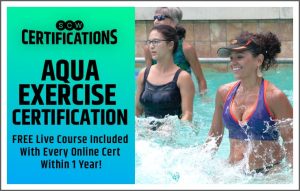
Plyometrics are exercises that allow the muscle to reach maximal force in the shortest possible time. They are quick, powerful movements that use a pre-stretch that involves a stretch shortening cycle (SSC). There are three phases of the SSC on land. An eccentric phase, an amortization phase (or transition phase between the concentric and eccentric), and a concentric phase. A study done by Furman University found that using plyometric exercises in addition to the normal exercise routine improved the power of their college football players (Caterisano 2018).
Plyometrics can be a separate workout or can be used along-side and even mixed in with standard resistance exercises. It has been shown that athletes can make great progress in training by using plyometrics, and it does not matter when it is done in the workout. It can be done before, after, or during an exercise session and the athlete will see enhancements in performance that is independent of gender, joint, or muscle group (Alemdaroğlu 2013). With just a few alterations, a land based plyo workout can easily be moved to the water.
In the pool, the SSC is altered slightly due to the water’s buoyancy and resistance and is influenced by the depth of the water. The three phases differ by a reduction in the eccentric contraction, an extended transition period, and an increased concentric contraction. These variations in aquatic-based plyometrics have been shown to reduce the vertical stiffness of athletes, which reduces the chances of injury (Sporri 2018). Aquatic-based plyometrics, or propelled training, offer the same benefits as land-based plyometrics, with the advantages of reduced injury risk, joint stress, and delayed onset muscle soreness (DOMS), plus an increase in range of motion, concentric contractions, and training volume (Sherlock 2019).
Listed below are shallow-water propelled exercises that can be added to an aquatic workout designed to improve power. It is recommended to wear aquatic shoes to assist with impact stress and improve grip and foot protection. The depth of water can vary, but waist to chest depth is ideal for most athletes.
Exercise | Land-Based Description | Aquatic Adaptations | Purpose | Aquatic Progressions
|
Standing Tuck Jump | Squat down to concentrically contract quads and glutes; explode into the air and tuck the legs to the chest. | Little adaptation required. Possibly add ankle weights to help with returning the feet to the pool floor faster. | Develop strength in jumping muscles. | Add weights to ankles Add drag equipment Cue to bring knees out of the water on the jump Perform on one leg |
Side to Side Jump | With feet together, jump side to side. | Little adaptations required. | Improve ability to quickly change direction. | Increase lateral distance covered. Add a sinkable platform to jump over Perform on one leg |
High Knees | Running in place with an exaggerated knee tuck. | No adaptations required. | Improve hip and knee ROM and running form | Increase exertion |
Sprint Forward, Tuck Jump w/ 90° Turn | Sprint forward a set distance, preload and tuck jump and turn 90° before landing. | No adaptations required. | Improve ability to jump and to quickly change direction. | Cue to bring knees out of water on tuck jump Cue jumps at random times |
Sprint then Cut Drill | Sprint forward, plant one foot and cut in a different direction. | No adaptations required. | Improve ability to quickly change direction. | Change from a set cut point to random points Coach controlling the direction of cut |
Depth Jump | Starting on a platform, jump to ground and preload before rebounding with tuck jump. | Perform from sinkable platform or jumping from the pool deck into the water. | Improve rebounding ability. | Cue to bring knees out of water on tuck jump. Change from sinkable platform to using pool deck as starting point Perform depth jump then sprint across the pool and exit water by pushing up with hands on pool deck. |
Most athletes need to develop power and plyometrics offer one training option. Transitioning these moves into the water help to limit injury risk while providing similar training results. 
REFERENCES
Alemdaroğlu, Utku, et al. 2013. “The Effect of Exercise Order Incorporating Plyometric and Resistance Training on Isokinetic Leg Strength and Vertical Jump Performance: A Comparative Study.” Isokinetics & Exercise Science, 21(3): 211–217. EBSCOhost, doi:10.3233/IES-130509.
Caterisano, Anthony, et al. 2018. “Improved Functional Power over a 5-Week Period: Comparison of Combined Weight Training to Flexible Barbell Training.” Journal of Strength & Conditioning Research (Lippincott Williams & Wilkins), 32(8): 2109–2115. EBSCOhost, search.ebscohost.com/login.aspx?direct=true&db=a9h&AN=139056276.
Miller, Michael G., et al. 2002. “Comparisons of Land-Based and Aquatic-Based Plyometric Programs During an 8-Week Training Period.” Journal of Sport Rehabilitation, 11(4): 268–283. EBSCOhost, doi:10.1123/jsr.11.4.268.
Sherlock, Lori. “Aquatic Training For The Athlete.” Nov. 2019. PowerPoint Presentation.
Sporri, Daniel, et al. 2018. “The Effect of Water-Based Plyometric Training on Vertical Stiffness and Athletic Performance.” PLoS ONE, 13(12): 1–11. EBSCOhost, doi:10.1371/journal.pone.0208439.
Water Safety Myths: True or False?
by Jenn Strobel
In honor of Water Safety Month, here are some unique questions about water and pool safety. Take the quiz and test your knowledge.
True or False?
- You should wait half an hour after eating before you can safely go swimming.
- Sunburn will fade into a tan.
- Clear pool water means clean pool water.
- Most children under the age of one who drown, drown in backyard pools.
- Drowning is noisy. I’ll hear my child splashing and struggling in time to help.
- If a child is wearing a swim diaper or rubber pants, there’s less of a chance for contamination of the water.
- Infant/toddler swim lessons prevent drowning.
- You can get “swimmers’ ear” without going swimming.
- Just for fun: Hiding underwater can stop a person from being hit by bullets.
- The cost of a near drowning will be covered by your insurance.
- Indoor pools should be cleared during electrical storms.
- Males and females drown at the same rate in the U.S.
- If you go outside with wet hair, you’ll catch a cold.
- You only need to shower before going into the pool if you haven’t bathed all day.
- I’m not a great swimmer, nor will I ever be. I am a sinker not a floater.
- When I get red eyes while swimming, it means there is too much chlorine in the water.
- Sunscreen with SPF 30 has twice the protection of SPF 15 lotion.
- A child can become afraid of the water after learning to swim.
- Dunking is the best way to teach your child to swim
How’d you do?
1. Wait a half hour after eating before you can safely go swimming. False
- This myth is universally accepted and still believed today.
- This myth involves the possibility of suffering severe muscle cramps and drowning from swimming on a full stomach.
- It is true that the digestive process does divert the circulation of the blood toward the gut, and to a certain extent, away from the muscles. – so naturally you wouldn’t want to swim after eating a big meal, thanksgiving dinner….but a peanut butter and jelly is probably fine.
- There has never been a documented case of drowning caused by swimming on a full stomach.
- As with any exercise, swimming right after a big meal might be uncomfortable, but it won’t cause you to drown.
2. Sunburn will fade into a tan…or better yet, some folks think you need to burn first before you can start to tan. False
- Sunburn is a burn and not a prerequisite stage for a tan.
- Sunburn will result in skin damage, redness, and peeling.
- Any amount of sun exposure poses an increased risk for the development of skin cancers and premature aging, but sunburn poses an even stronger risk.
3. Clear pool water means clean pool water. False
- Microorganisms can be present even in pools that appear clean.
- What you smell, feel and hear can help you sense whether you’re swimming in a healthy pool.
4. Most children under the age of one who drown, drown in backyard pools. False
- Children under the age of one mostly drown in bathtubs, buckets, and toilets.
- During 1996-1999, 58 kids less than 5 years old drown in buckets. (CPSC)
5. Drowning is noisy. I’ll hear my child splashing and struggling in time to help? False
- Maybe in the movies…but not in real life- this myth really endangers young children.
- Children may not know what to do to right themselves or stand up, even in a few inches of water – as a result, they just “slip away” in silence.
- “Sinkers” – “Plunge Downers” are drowning victims who never resurface and slip under water quietly.
6. As long as a child is wearing a swim diaper or rubber pants, there’s less of a chance for contamination of the water. True and False
- “Accidents” from diapered children pose a risk of contamination from fecal matter. To minimize this risk, make sure your child’s bottom is clean and don’t swim if you or your child have loose stools.
- Make sure a clean, form-fitting “swim diaper” is worn by the child at all times. At the same time, keep in mind, swim diapers are not leak proof!
7. Infant/Toddler swim lessons prevent drowning. False
- Four – six years of age is the best age to learn.
- Infant and toddler swim lessons can have serious drawbacks, ENT problems, swallowing water, and overconfidence.
- There is no evidence to support infant/toddler lessons for drowning prevention. (American Academy of Pediatrics)
8. You can get “swimmers’ ear” without going swimming. True
- Pseudomonas is a rod shaped bacteria found in an aqueous environment that causes a variety of infections.
- Those living in hot and humid locales often contract “Swimmers Ear”, an infection of the external ear canal.
- Use alcohol or vinegar in a glycerin solution for prevention.
9. The cost of a near drowning will be covered by your insurance. DEPENDS
- Healthcare cost for each near drowning event range from $75,000 for emergency room services to $180,000 per year for long term care.
- Brain damage as a result of near drowning can cost up to $4.5 million.
- Annual cost of care per year in a chronic care facility for an impaired survivor of a near drowning event is approximately $100,000. (CDC, American Academy of Pediatrics)
10. Males and females drown at the same rate in the U.S. False
- The CDC reports that 80% of all drowning deaths in the US occur to males. (2003)
11. If you go outside with wet hair, you’ll catch a cold. False
- Cold weather, wet hair, and chills don’t cause colds.
- Viruses cause colds. People tend to catch colds more often in the winter because these viruses are spread more easily indoors, where there may be more contact with dry air and people with colds.
- Dry air – indoors or out – can lower a person’s resistance to infection.
12. You only need to shower before going into the pool if you haven’t bathed all day. False
- All swimmers should shower before entering the pool. Perspiration, body oil, perfume, urine, and other waste are with us at all times and are rinsed off in the shower (or in the pool water should you skip your pre-swim shower.)
- It is a state law to shower before entering a public pool.
- In addition, showering before entering the pool allows your hair and skin to absorb more fresh water and helps reduce the risk of your hair and skin from drying out due to the chlorine in the water. This is especially pertinent for those with sensitive skin or color treated hair.
13. I’m not a great swimmer, nor will I ever be. I am a sinker not a floater. False
- This bit of philosophy tends to be used more an excuse to not put in the time to adapt to the aquatic environment and learn to work with the water.
- Having worked with numerous swimmers and athletes who struggle with this concept, one thought always comes to mind….RELAX!
14. When I get red eyes while swimming, it means there is too much chlorine in the water. False
- Red eyes and itchy skin are usually caused by improper pH or high chloramine levels. Surprisingly, the pool may actually need additional chlorine treatment to get rid of chloramines and sanitize the water.
15. Sunscreen with SPF 30 has twice the protection of SPF 15 lotion. False
- SPF 15 lotion blocks 93 percent of the harmful rays.
- SPF 30 lotion blocks 97 percent of the harmful rays.
- As long as your SPF is in the 15-30 range, you’re safe.
- Most experts today, agree that an SPF above 30 provides very little additional protection- It’s a marketing gimmick.
16. A child can become afraid of the water after learning to swim. True
- Just because your child had no fear and is a good swimmer one summer (or day), doesn’t mean he will feel the same way the next summer (next day, in a week, or a month.) This is especially true with younger children ages 0-4 if they are not regularly exposed to swimming.
- Keep your children in the water regularly to reinforce being comfortable in and around the water.
17. Dunking is the best way to teach your child to swim. False
- There are different schools of thought on dunking small children under water-excessive water swallowing, choking, and gagging are not part of learning to swim.
- Limit the number of times you submerge your child (no more than 3 times is a good rule of thumb) even if they do it on their own (on accident).
If you have any questions about water safety or these quiz questions, reach out to aquatics@duke.edu. Thank you for taking the time to take this quiz!
The Power of Swimming
on Mental Health
by Mark Welte
May, just a few days away, is Mental Health Awareness Month, and while that means different things to different people, we can probably all agree that information leading to more resilient, vibrant, open, and good-humored states of mind is a good thing.
Sports in general help keep the mind young, fresh, and alert, and swimming is no exception. TV legend Mister Rogers swam daily, and was in possession of a sterling outlook on life. Actors like David Duchovny and Julia Roberts swim regularly for both physical and mental fitness. Many open water swimmers consider their time in the lane-free waters as being ‘healing,’ helping to diminish whatever mental goblins they may be carrying around. We know it’s aerobic (√), it uses all the muscles (√), anyone can do it (√), and it’s cardiovascular (√).
Athlete, psychiatrist, and Chief Medical Officer of Brightside Health, Dr. Mimi Winsberg, told me that while exercise in general stimulates the BDNF (brain-derived neurotrophic factor) — key ingredients in the health and growth of brain cells — swimming may actually outperform other forms of exercise.
“Swimming may be particularly good for our brains,” Winsberg wrote in an email. “In addition to enhancing sleep length and quality, it also seems to boost mood, reduce anxiety, and improve cognitive function. Animal studies have shown that swimming exerts these positive effects on mood both by stimulating the growth of new brain cells, and the neurochemicals they produce.”
Winsberg also noted that, in his book “Blue Mind,” Dr. Wallace Nichols outlines the mental health benefits of simply being on, in or under water. According to Winsberg, he argues that mere proximity to water can contribute to a sense of calm, and reduce anxiety.
Indeed, meditation apps and videos found online most often use water-centric sounds as an ambient foundation for more peaceful and deeper relaxations.
Swimmers often mention becoming mesmerized by the repetition of their stroke, and even entering a “meditative-like state” during their workouts, which helps reduce anxiety and the chorus of maladies that accompany it.
Swimming with a Masters club or other group also helps satisfy our very basic human need for social contact. Group activity — even when pursued in the context of an individual sport — helps reduce age-related cognitive decline, depression, anxiety, and related brain-based problems. Not to mention the accountability factor! During Covid, when my swim club was closed and the air temperature and water temperature didn’t add up to 100F, the only reason I was out swimming for 25+ minutes, 5x/week, was because of peer pressure! Yet, it was that tribulation and camaraderie that helped us all through the winter, helping us not only to exercise but to feel mentally bright, ‘morally resilient,’ and charged with vitality.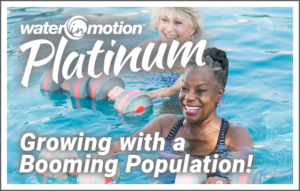
Swimming is a virtuous cycle, then, in which one strokes their way to better daily living, for longer sustained periods of time and life. Factor in the low risk of injury, and the swimmer can look forward to a more mentally-positive outlook from the day they begin, unto eternity.
Does Structure Matter?
As an AEA Aquatic Training Specialist and Creator of S’WET, I know that structure is the top priority in designing and creating aquatic fitness classes and sessions! But why? Whether you’re a brand-new instructor, a lifesaving substitute or veteran teacher, your sessions should follow a specific format, or structure. The needs and ability of the class, size and shape of the pool, equipment available, purpose of the session, and water temperature, should be the factors around which your structure is designed. Though speaking from a water perspective, land-based classes also follow formatting and structure, to ensure classes are safe, effective and attainable for the participants attending.
If you’re already trained as an aquatic fitness or a land group fitness instructor, you already know the components of a basic fitness class: Warm up, Conditioning & Cool Down. There is a WIDE range of formats to play with when it comes to plugging in your conditioning phase, but even with a proper warm up and cool down, what happens in between is crucial for the participant. As trained fitness professionals, we take on quite a bit of responsibility when it comes to helping our participants achieve their fitness goals while keeping them safe during their workouts. Therefore, educating ourselves in properly building and structuring our classes is an important role in our careers.
AEA Recommendations for Program Design:
Class component | Considerations | Duration Range |
Warm-Up | Purpose of Class | 5-15 minutes |
Water temperature | ||
Conditioning | Purpose of class | 20-120 minutes |
Available equipment | ||
Participant ability | ||
Participant needs and goals | ||
Water temperature | ||
Water depth | ||
Cool-down | Purpose of class | 5-15 minutes |
Intensity of class | ||
Water temperature | ||
Participant ability |
No class can start without a warmup and end without a cool down, so it’s important to take both components seriously when designing your classes. Many of the top fitness education manuals and books will explain how starting classes slowly (without equipment) and with short lever movements (i.e., jogging, marching and/or traveling) is going to get all the body’s joints, tendons and ligaments ready for increased impact and heavier resistance as you lead into more strenuous movements. Referring to the chart, you can see that there is quite a bit of time to work with during the conditioning phase, and this is where I like to share my WHY for how I structure my classes.
My philosophy is that a lengthened muscle is a strengthened muscle; however, most people do not take the time to stretch. But the beauty of water (combined with an educated instructor) is that it allows for use of the buoyancy to naturally assist the body in lengthening while strengthening from the viscosity and resistance of the water. Designing the warmup component into a 10-15 minute durations allow the small and important joints (hands, wrists, ankles, feet, hips, shoulders and spine) to work before really getting the waves rolling with longer levers (i.e., jumping jacks and Cross-Country SKI) exercises. 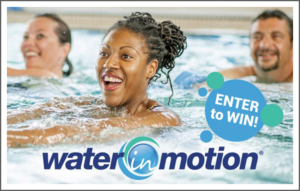
S’WET stands for Structured Water Exercise Training and the reason Structure is so important is to make sure we, as aquatic professionals, provide an effective yet safe aquatic workout for all our members, regardless of their fitness level and/or capabilities. Giving students an adequate warm up to get the blood flowing creates the ideal environment to proceed into the appropriate components for your conditioning format for a total body aqua workout that will leave all your students feeling accomplished and wanting to return for more. What keeps them coming back? RESULTS! But how do we ensure results are made? Structure J This is why I always incorporate cardiovascular stamina, Strength/Equipment exercises and Plyometric power moves to keep students making waves, having fun, and getting the most resistance possible from the water that they can.
An example of how I may block a 45-60 minute class:
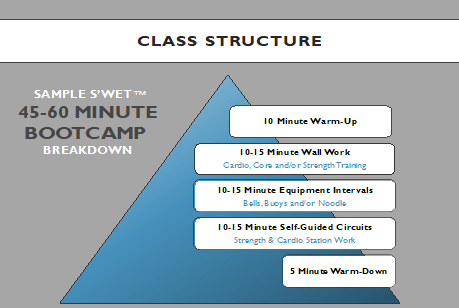
Even with a structured class plan, the water is the best equalizer to ensure we can offer every BODY an option (or modification) to work at their peak performance. This also allows us to regress and progress a lot of movements to suit each person’s abilities and ensure they feel successful after every class. Structure, for me, started with ‘blocking’ my classes in a way that allowed breaks for rehydration and movement to specific areas of the pool in preparation for the next phase of class, once the warm-up was completed. This ‘blocking’ structure also allows for equipment changes and recovery periods before proceeding to the next segment of the class. These breaks between the blocks of movement allowed not only me to gather myself, but students to hydrate (#1) and get ready for the next blocked component of the class. Replenishing oxygen levels is imperative if we’re trying to maximize muscle contractions as well as push participants to reach their maximum levels of performance, so using this block method not only helped me structure a well-rounded and safe class, but gave my students the ability to max out their water workouts!
 About the Author
About the Author
Jenni Lynn Patterson-LaCour is an AEA Aquatic Training Specialist and a CEC provider for AEA, AFAA and ACE. She holds numerous fitness certifications, including NSCA-CPT. With her bachelor’s degree in Health Psychology, Jenni Lynn combines her knowledge of neuromuscular and physical conditioning with all the components of a total body workout. Jenni Lynn has been at the forefront of the aquatic fitness movement, making waves with her innovative and trademarked technique, S’WET™– a high-intensity, low-impact water workout appropriate for all levels of activity, from beginner to triathlete swimmer! Blending High Intensity Interval Training (HIIT), advanced cardio, plyometrics, Pilates and her very own special ingredient – a whole lot of fun – Jenni Lynn makes S’WET the sought-after solution for a whole new generation of water workout enthusiasts. Jenni Lynn truly believes the perception of water fitness can be transformed and soon ALL ages and genders will be working out together in the pool!
Make Waves in Atlanta
Get ready for the Ultimate Wet Fitness Event! SCW takes on Atlanta this July 21-23 at the Grand Hyatt Atlanta Buckhead! Come and experience education and inspiration in an electrifying atmosphere with your Aqua Presenters and over 15 splash-able sessions. Earn all your CECs in one place, shop the hall-studded Exhibitor Expo, and make lifetime connections. Don’t miss out on the opportunity to take your career to the next level!
Looking To Hire? FREE Job Board
In Need of Teachers, Trainers, Directors, or Managers? SCW’s new FREE JOB BOARD is supporting the industry’s need for qualified fitness pros.
Best of all there is NO COST to you. We will post your openings in all three of our monthly e-newsletters: Spotlite, Health & Fitness Business News, and Tidal Waves which are emailed out to tens of thousands of fitness professionals teaching and training in all formats along with managers and directors at all fitness facilities: big box, gyms, boutique, studios, not for profits and independent centers.
We’re always looking for great content highlighting the newest things in the world of aquatic fitness. Please submit your article directly to editor@scwfit.com for immediate consideration!
Give us your feedback on what interests you, and maybe YOU will make it in the SCW Tidal Waves!
Tidal Waves, January 2025
Tidal Waves, November 2024
Tidal Waves, October 2024
Tidal Waves, June 2024
Tidal Waves, May 2024
Tidal Waves, April 2024
Tidal Waves, March 2024
Tidal Waves, February 2024
Tidal Waves, January 2024
Tidal Waves, December 2023
Tidal Waves, November 2023
Tidal Waves, October 2023
Tidal Waves, September 2023
Tidal Waves, August 2023
Tidal Waves, July 2023
Tidal Waves, June 2023
Tidal Waves, May 2023
Tidal Waves, April 2023
Tidal Waves, March 2023
Tidal Waves, January 2023
Tidal Waves, November 2022
Tidal Waves, September 2022
Tidal Waves, July 2022
Tidal Waves, June 2022
Tidal Waves, May 2022
Tidal Waves, April 2022
Tidal Waves, March 2022
Tidal Waves, February 2022
Tidal Waves, January 2022
Tidal Waves, November 2021
Tidal Waves, October 2021
Tidal Waves, August 2021
Tidal Waves, July 2021
Tidal Waves, June 2021
Tidal Waves, May 2021
Tidal Waves, April 2021
Tidal Waves, March 2021
Tidal Waves, January 2021



